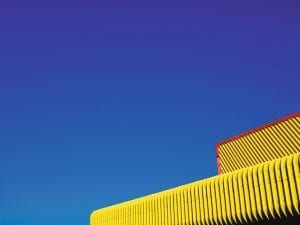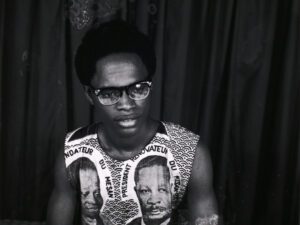In a town whose faded seaside glamour is both complimented and disturbed by a swath of public art, it is only at low tide that the feverish digging can commence. A swatch of beach that in the morning looks like the realisation of a grim prophecy in a Morrissey song is by late afternoon swamped by an ecstatic crowd. Michael Sailstorfer has buried £10,000 worth of gold bullion in the unforgiving sands of the Old Harbour.
The Folkestone Triennial mobilises the past to bring contemporary art into public dialogue about a bright future. Lewis Biggs has curated site-specific works that range from experiments in relational aesthetics to proposals for regeneration. There is an overarching sense of a struggle to re-analyse the role of public art in times of economic woe, as a town which feels closed for business offers up some innovative and poignant work.
The work is derived from the physical and historical attributes of place, with each artist responding to a location, a piece of infrastructure, a myth or a memory. Jyll Bradley has taken a circle of shingle, marking the location of an old gasometer, and sensitively populated it with a grid of aluminium poles. By day Green/Light (2014) marks the place where electricity was first generated to Folkestone in a structure which evokes the cold spirituality of Stone Henge, but by night the poles glow a warm yellow.
Bradley has repurposed a defunct piece of industrial land, making a ghost of the past that brings the site hurtling into the present. There are moments, such as Andy Galsworthy’s Clay Window and Clay Steps (2014) or Krijn de Koning’s Dwelling (2014), when the landscape simply gives way to intervention, defeated as if its entire existence had been leading to precisely this fate.
The strongest works are the most courageous, unflinching confrontations with history. Tim Etchells, with a flourish of minimalism and keen eye for the emotional gravity of place, has adorned the abandoned, overgrown platforms of Folkestone Harbour Railway Station with neons which read ‘Coming and going is why the place is there at all’. In this wasteland at the edge of the town, the soft glow of neon lights and the eerie defiance of the railway structure against the ravages of nature remind us that all human efforts, even Pablo Bronstein’s vaguely perverse Beach Hut in the Style of Nicholas Hawksmore (2014), begin and end with irrepressible forces beyond our control.
The remarkable thing is that all this art manages to be bitingly contemporary at the same time as nestling so comfortably, often so subtly, in the fabric of Folkestone. It’s not that you could miss it, but only that with every fresh encounter you feel it is meant to be there. Each work, especially Sailstorfer’s goldrush, demands active participation as if to mirror the community effort this town requires to turn around its economic fortunes. There is a difficult sense that art is sincerely trying to make an urgent political statement, but that it risks being lost in the hubris of participation. But as long as these beleaguered people strike gold without drowning, the Triennial will emerge triumphant.
Folkestone Triennial, until 2 November, Kent. For more information visit www.folkestonetriennial.org.uk.
Daniel Barnes
Credits
1. Jyll Bradley, Green/Light (2014). Courtesy of the artist.
Follow us on Twitter @AestheticaMag for the latest news in contemporary art and culture.





